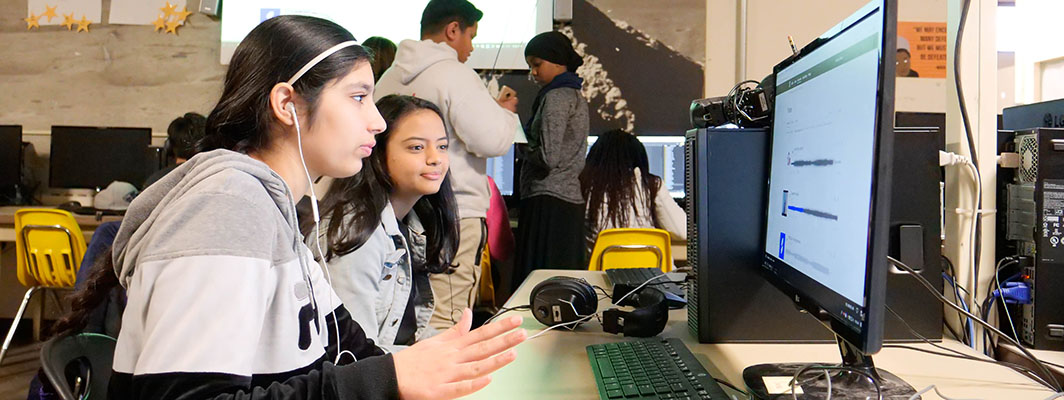
During a discussion I facilitated at the Digital Promise League of Innovative Schools spring 2019 meeting, administrators shared some of the barriers their school communities face in trying to embrace CS and coding. They included time constraints, fear, lack of professional development, not knowing how to integrate it into the curriculum, teacher overload, teacher resistance, flexibility, scale, and freedom.
Hour of Code is an excellent way to begin promoting CS content, but for the journey to continue, educators need to understand how CS and coding can seamlessly connect and build onto what they are already doing in class—by supporting students and developing meaningful projects that offer flexibility for both students and teachers, and tie into the curriculum.
Recognizing these needs, BrainPOP designed Creative Coding, a project-based coding package that addresses barriers and encourages coding as a creative means of expression. Instead of assigning slideshows, dioramas, and posters as a way for students to “show what they know,” Creative Coding encourages students to “code what they know.”
A recent visit to The Bayside School (P.S. 31Q) in New York—where teachers are naturally integrating CS and coding into every classroom—left me inspired and excited about the role coding can play in education. When I share with educators and administrators what I observed at P.S. 31Q, like posters promoting “Algorithm for Creating a Painting” in art class and “Algorithm for Choosing a Book” in a second grade classroom, the response is eagerness to bring these kinds of easy, offline, and flexible activities to their school community as a way to start introducing CS vocabulary into the school day, no matter what grades or subjects they teach.
Whether taking baby steps or jumping into the deep end, providing meaningful early entry points to coding and CS to all students—not just those who are able to attend after-school or weekend courses in coding—is essential for equity. By planting the seeds of possibility, teachers support and encourage their students, giving them confidence and raising their awareness of the roles CS and coding have in the world today and in the future.